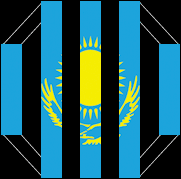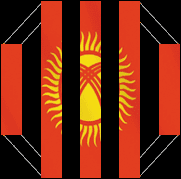Fighter On Fighter! Breaking Down ‘The Eagle!’

Adam Hunger-USA TODAY Sports
Ultimate Fighting Championship (UFC) Lightweight kingpin, Khabib Nurmagomedov, will return to the cage opposite interim strap-hanger, Dustin Poirier, this Saturday (Sept. 7, 2019) at UFC 242 from inside The Arena in Abu Dhabi, United Arab Emirates.
Little less than one year ago now, Nurmagomedov picked up the biggest win of his career in dominant fashion, shutting down Conor McGregor’s vaunted kickboxing and strangling him in the championship rounds. It should’ve been a decisive end to the rivalry, but Nurmagomedov ultimately fanned the flames further by leaping from the cage to attack a taunting cornerman. As a result, Nurmagomedov was fined and suspended, creating a need for the interim title that must now be unified. Beyond all of the controversy, however, this is really just another pair of absolutely elite Lightweights dueling over the title of best on the planet.
Let’s take a closer look at Nurmagomedov’s skill set:
Striking
Nurmagomedov is not a kickboxer, nor is he trying to be. There are legitimate criticisms about his striking that do not benefit him in regard to the takedown such as when he backs straight up. Much of the time, however, Nurmagomedov is leaping forward recklessly both to set up the takedown and because of its threat.
It’s not easy to block both a potential punch and takedown at the same time. A choice must be made. Most foes are more willing to avoid the takedown early, which is how big punches slip through (GIF).
On the feet, Nurmagomedov’s goal is pressure, but he doesn’t always charge forward relentlessly like he did opposite Edson Barboza. In fact, if you watch that bout and compare it to his victory over Michael Johnson, his approach differed based on their striking styles. Barboza is a far more dangerous kicker than puncher, which resulted in the ceaseless, run-straight-forward approach that jammed up many of Barboza’s kicks. Johnson is the faster and more powerful boxer, and Khabib was more cautious with his forward pressure as a result.
As for Nurmagomedov’s actual striking, it’s largely meat-and-potatoes. He walks his foe down with the jab and cross, keeping his hands high and slipping his way forward. Much of the time, Nurmagomedov will respond to whatever his opponent throws — assuming it doesn’t land fully — with a one-two combination, keeping on his opponent and always looking for a chance to level change. Against McGregor, he frustrated the counter puncher by simply remaining calm and flicking out jabs, refusing to bite on anything too significant.
Opposite Barboza, Nurmagomedov was far more active in throwing round kicks. They were hard kicks thrown well enough — if not amazingly set up — and it was smart tactic in kicking with the kicker.
Against Iaquinta, Nurmagomedov spent a decent portion of the second half of the fight striking with the New Yorker. Personally, I believe he did this for two reasons: to shut up some criticisms of his kickboxing, and because wrestling is hard work even when winning the takedown battle. Whatever the reason, Nurmagomedov completely picked Iaquinta apart. Mostly, Nurmagomedov worked the jab, countering Iaquinta’s low stance. Iaquinta was hunched over to stop the shot, but that allowed Nurmagomedov’s jab to shoot low from his waist directly into Iaquinta’s face (GIF). In addition, the Russian began switching to the left hook afterward, building off the established threat of the jab.
Aside from the basics, Nurmagomedov mixes in smart tactics to set up takedowns. He’ll level change into punches or mix a shovel hook into his offense (GIF), strategies designed to punish fighters for daring to defend his takedowns. Similarly, the flying knee works wonders for Nurmagomedov, not so much in landing and doing major damage, but it often convinces foes to square up and raise their guard. It’s really difficult for the defensive man to see a fighter flying forward behind the battering ram that is a knee without some type of reaction that exposes the hips.
Wrestling
Nurmagomedov is a ridiculously credentialed Sambo athlete, as well as a Judo black belt and experienced freestyle wrestler. Look up his wiki page if you’d like the full details, but know that “The Eagle” has a lifetime of wrestling and grappling experience that allows him to dominate fights.
First and foremost, we have to talk about how Nurmagomedov actually scores the takedown. Against the average foe, Nurmagomedov will time an easy double leg, ducking under and snatching the hips for an easy slam (GIF).
Against high-level competition, it’s usually more complicated than that, and timing the double so perfectly is more difficult. In such situations, Nurmagomedov is more willing to dive for a single-leg takedown. I mean dive quite literally, as Nurmagomedov is willing to take ugly shots in order to get a grip, recover good posture, and then finish the shot.
Nurmagomedov has a number of ways of transitioning into a finished takedown. Early on, foes did not quite understand just how good Nurmagomedov was from the back clinch, and they were willing to turn away and attempt to limp leg out of shots. There’s a reason why it’s rarely attempted now, as Nurmagomedov is an expert at suplexing, tripping, dragging and simply mugging fighters from that position (GIF).
The more common approach now is to avoid that at all costs and try to defend against the fence. Nurmagomedov has many answers for that position as well, but Barboza was able to dig and underhook and spin his foe a couple of times. Securing the underhook first is key to stopping his shot, as using an overhook to stop the double-leg — common practice in mixed martial arts (MMA) — is a bad idea.
Nurmagomedov is perfectly happy to give up on a shot and transition into the upper body clinch. He may not be able to secure a body lock right away, but Nurmagomedov will dig his underhook — the one his opponent gave up by using an overhook to stop the shot — very deep. Between the deep underhook and head position — he always has his forehead driving into the jaw — the Dagestani is in great situation.
From that position, Nurmagomedov’s usual go-to is to attempt a body lock or at least get close to one, get his hip in, and attempt to muscle his foe over that hip. If they resist by widening their base, Nurmagomedov will suddenly change directions with an inside trip instead. At any point, Nurmagomedov can use that underhook to drop back down into a single leg, which can quickly become a double leg against the fence.
Once on top, Nurmagomedov’s control is extraordinary. There’s some great details in his game, but the big picture here is that Nurmagomedov is constantly triangling the legs or controlling a double-wrist ride. Triangling the legs is a simply enough concept: the bottom man cannot stand up if both of his legs are extended. From that position, Nurmagomedov can wear on his opponent and mix in punches, something he’s especially good at.
The double-wrist ride or two-on-one control from turtle is one of the most dominant forms of control available. Usually, Nurmagomedov looks to latch onto the two-on-one immediately after slamming his opponent to the mat, using that moment of impact to lock into position before his opponent can defend.
Once the arm is trapped, Nurmagomedov will work on breaking his opponent down flat to the mat, which is exhausting work for his foe. Whenever his foe begins working to stand, Nurmagomedv will yank him back to the mat. If he stands all the way up, Nurmagomedov still has a ton of options to return him to the mat.
All the while, Nurmagomedov can briefly release the two-on-one with one hand and slam home punches. Usually, his foe has to cover up under the ground strikes, but Nurmagomedov can also transition back to the double-wrist ride if his foe moves to stand.
There’s also a special element of brutality to Nurmagomedov’s ground and pound. He’ll utilize classic ground striking techniques like throwing the leg by into a punch, but Nurmagomedov has truly mastered getting every extra bit of thud into each strike. For example, it’s rare to see uppercuts on the mat, yet Nurmagomedov smashes Barboza’s skull with uppercuts while his head was trapped along the fence in an attempt wall-walk.
Brazilian Jiu-Jitsu
Perhaps the most underrated aspect of his game, nine of Nurmagomedov’s victories come via tapout. While some of this finishes are more the result of his brutal ground strikes than anything else — see his attempts to snatch a rear naked choke or arm triangle out of nowhere against a dazed foe — there’s also some crafty technique involved.
Nurmagomedov’s leg triangle commonly leads to guard passes as well, and once around the guard, Nurmagomedov has another pretty signature chain of techniques. From side control, he’ll pretty immediately begin looking for the crucifix. It can be a fight-finishing technique, but even if his foe manages to release the arm, it’s another few free punches while they try to wriggle free.
Interestingly, Nurmagomedov has four triangle wins on his record, which doesn’t really fit the mold of top position mauler. He’s shown quick hips from the mount and back, throwing up the hold with a great deal of confidence.
Opposite Abel Trujillo, Nurmagomedov briefly wound up on his back twice during scrambles. In both situations, he immediately went for the triangle. The first time, Nurmagomedov wound up nearly locking up an armbar instead. Trujillo managed to survive and maintain top position, so Nurmagomedov used butterfly hooks into a stand up and arm drag to reverse him. In the second example, Nurmagomedov successfully locked up the triangle and nearly finished Trujillo, but “Killa’s” broad shoulders allowed him to survive until the end of the round.
Thankfully, someone made a highlight clip of both transitions, so check ‘em out yourself (GIF)!
Conclusion
What is Nurmagomedov’s legacy at this point? He’s definitely secure his position as a champion and great fighter, but it certainly seems that the Dagestani athlete has even loftier goals in mind. He wants to be regarded as an all-time great, and the absolute best way to build towards that goal is to keeping defending his belt against legitimately great contenders like Dustin Poirier.
Remember that MMAmania.com will deliver LIVE round-by-round, blow-by-blow coverage of the entire UFC 242 fight card right HERE, starting with the Fight Pass “Prelims” matches online, which are scheduled to begin at 10 a.m. ET, then the remaining undercard balance on FX at 12 p.m. ET, before the PPV main card start time at 2 p.m. ET on ESPN+.
To check out the latest and greatest UFC 242: “Khabib vs. Poirier” news and notes be sure to hit up our comprehensive event archive right here.
Andrew Richardson, a Brazilian jiu-jitsu brown belt, is a professional fighter who trains at Team Alpha Male in Sacramento, California. In addition to learning alongside world-class talent, Andrew has scouted opponents and developed winning strategies for several of the sport’s most elite fighters.













